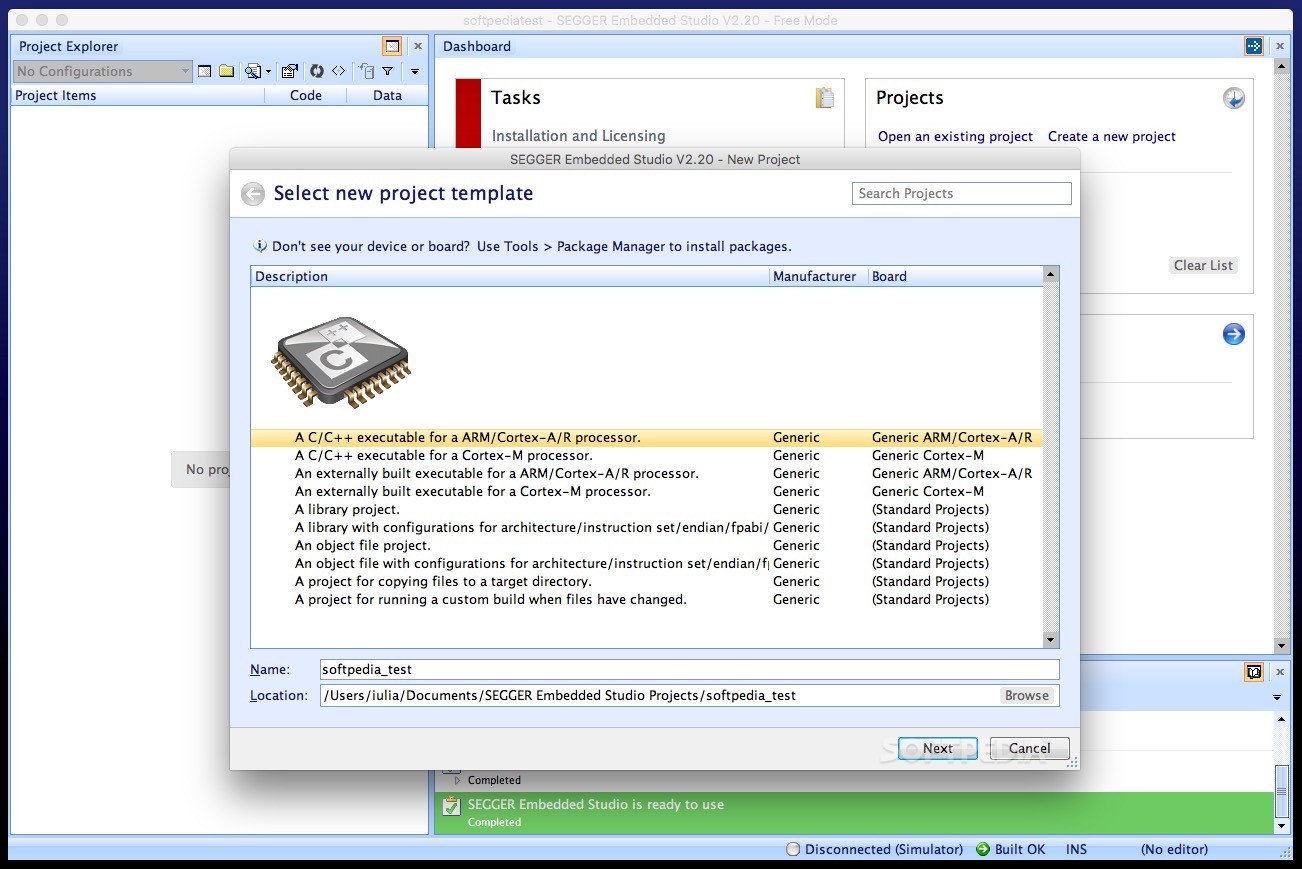
- #Segger embedded studio serializer update#
- #Segger embedded studio serializer upgrade#
- #Segger embedded studio serializer full#
- #Segger embedded studio serializer Bluetooth#
- #Segger embedded studio serializer series#
#Segger embedded studio serializer Bluetooth#
Another proprietary feature (not part of the Bluetooth SIG Mesh 1.0 spec) we have implemented in the SDK is a remote provisioning feature that allows provisioning nodes outside of direct radio contact with the provisioner
#Segger embedded studio serializer full#
The provisioning is done by a Provisioner, which is a trusted device with access to the full list of devices in the network and their addresses. During provisioning, a device gets added to the network and is assigned a range of unicast addresses, a network key, and a device key. One is a side-by-side DFU to avoid application down time, the other is designed to minimize the flash memory footprint with the disadvantage that the application is down during the roll out of the new FW.īefore a device can participate in a mesh network, it must be provisioned. We therefore implemented 2 different over-the-air DFU modes.
#Segger embedded studio serializer upgrade#
a bridge between the Bluetooth Mesh and other protocols such as Ethernet/WIFI/LTE.Ī key feature needed when developing products for an evolving standard such as Bluetooth mesh is the capability to upgrade nodes. This is especially useful for customers who are designing a Bluetooth Mesh gateway, i.e. We have also created a serializer API, so that the mesh can be controlled from an external host.

We have therefore created a Beacon API as part of the Mesh SDK to do concurrent Beaconing and mesh networking.

This is the way we support connectivity with phones/tablets/PCs that do not support the Bluetooth mesh standard.Ī typical use case for the mesh is to have beacons with a mesh as a backbone network to push out updates etc or use beacons for asset tracking. As shown in the figure, the mesh stack utilizes the Nordic SoftDevice time-slot API to allow for concurrency with GATT/GAP based devices. Above those layers, mesh models are defined (Lighting, sensor etc.) which is similar to the profiles in standard Bluetooth low energy. As you can see, the mesh stack is a new stack consisting of new layers as specified by the Bluetooth SIG, i.e., Bearer, Network, Transport (Lower/Upper), Access and Foundation models. The architecture of the nRF5 SDK for mesh is show in the figure below. If you want to dig deeper into Bluetooth mesh and how it works in the nRF5 SDK for mesh, I suggest having a look in our documentation which can be found here. Thus, the mobile phone is not part of the mesh network, but the messages to/from the phone can be bridged into the network via the mesh node with concurrent mesh and GATT/GAP. Smartphone/mobile phone connectivity to the mesh node is realized using a concurrent Bluetooth Mesh stack and the standard Nordic Bluetooth stack (GATT/GAP). The latency is on average 15ms per hop and the power consumption of the nodes is largely determined by the receive current (if everything is configured for minimum latency which means radio is on close to 100% of the time). The network latency and node power consumption depends on how much of the time is spent in scanning and advertising. In order to avoid excessive and unnecessary network traffic/flooding, there are mechanisms to reduce traffic, such as adjustable scanning and advertising intervals and a time-to-live (TTL) counter, which defines how many times a packet can be broadcasted. A simple, but effective way of spreading information across the mesh network with no single point of failure. This functionality is not implemented in v0.9.1 but will be added at a later stage.) Bluetooth mesh relies only on scanning and advertising, so it means that every received packet is broadcasted by relays, until the packet is received by the destination node (a so-called managed flooding mesh). (To support battery powered nodes the Low Power nodes and Friend nodes are defined in the Bluetooth SIG specification. A relay node has the additional capability of re-broadcasting messages. The below figure is showing a Bluetooth mesh network, which can be created with the nRF5 SDK for Mesh.Īll nodes in a network are capable of sending and receiving messages. From a holistic point of view, mesh enables Bluetooth to expand its range/coverage and increases the # of nodes in the network and enables many-to-many (m:m) communication.

#Segger embedded studio serializer update#
With this update to Bluetooth, there are significant changes and many new concepts to learn for developers and product makers. What is Bluetooth mesh? The mesh capability is a significant update and enables a radical new approach to making Bluetooth applications. This first (v0.9.1) release is packed with new features and concepts for Bluetooth.
#Segger embedded studio serializer series#
The day after the Bluetooth SIG announced the 1.0 spec of the Bluetooth mesh we are happy to announce the nRF5 SDK for Mesh for our nRF51 and nRF52 Series SoCs.


 0 kommentar(er)
0 kommentar(er)
